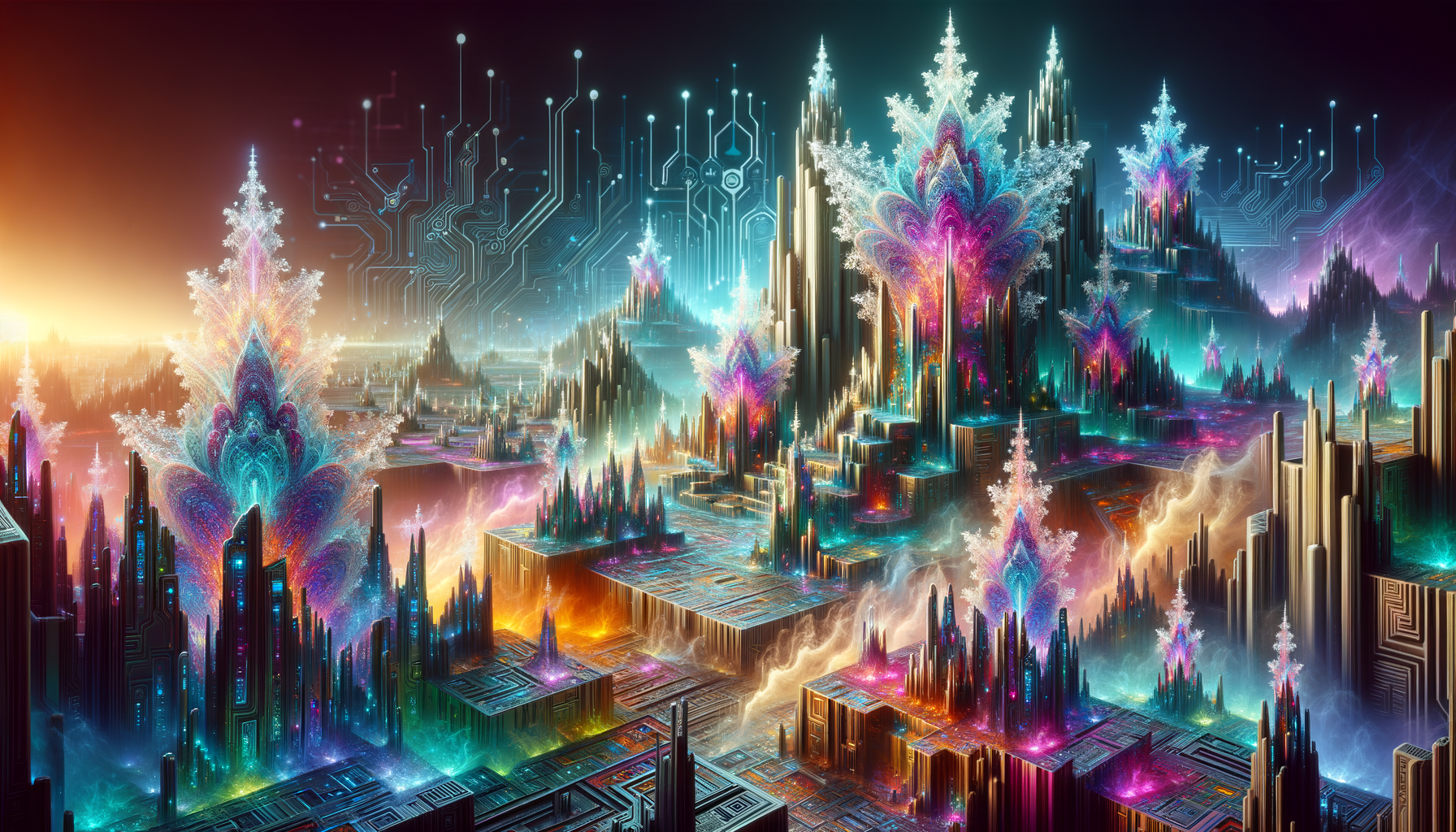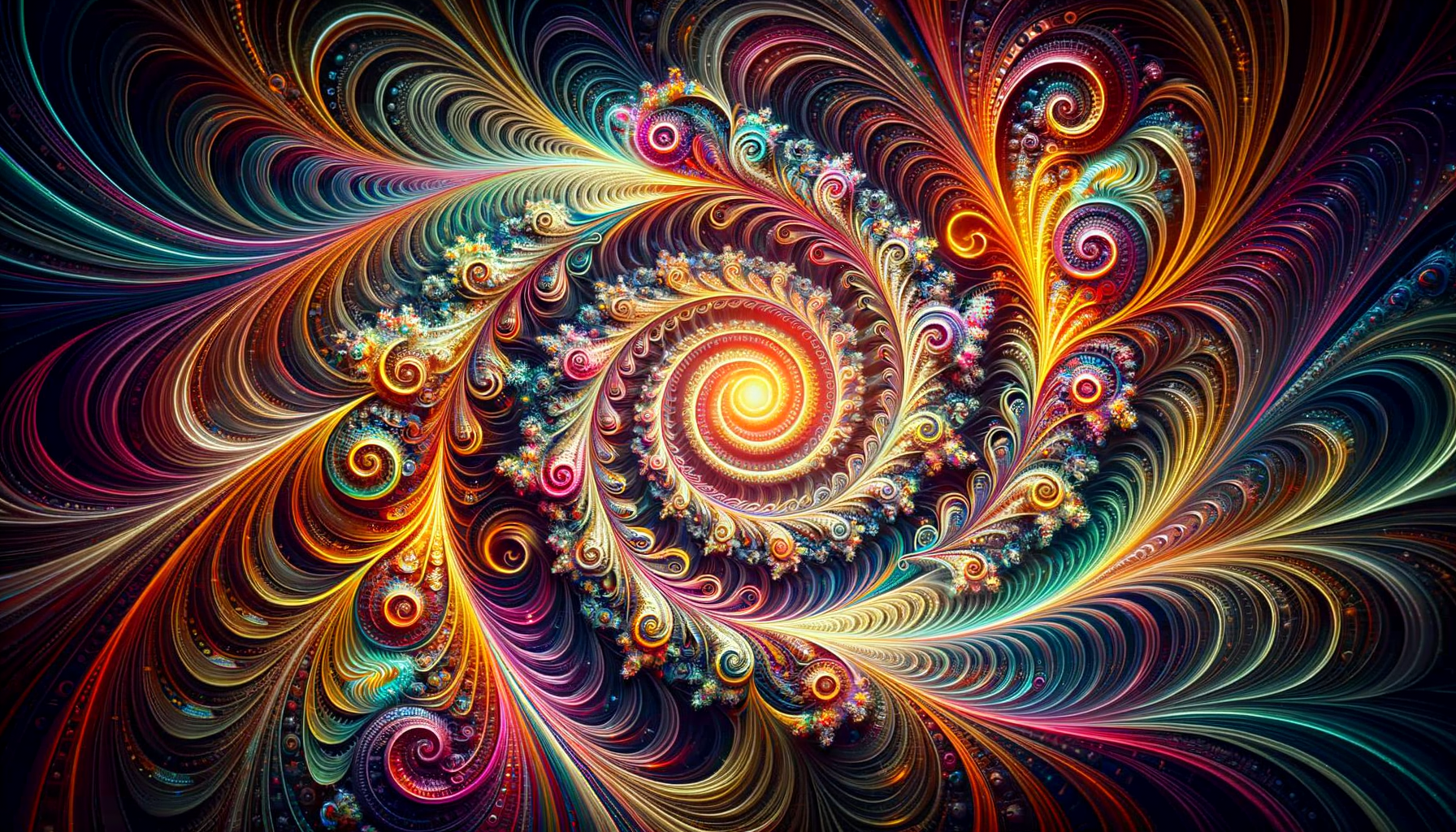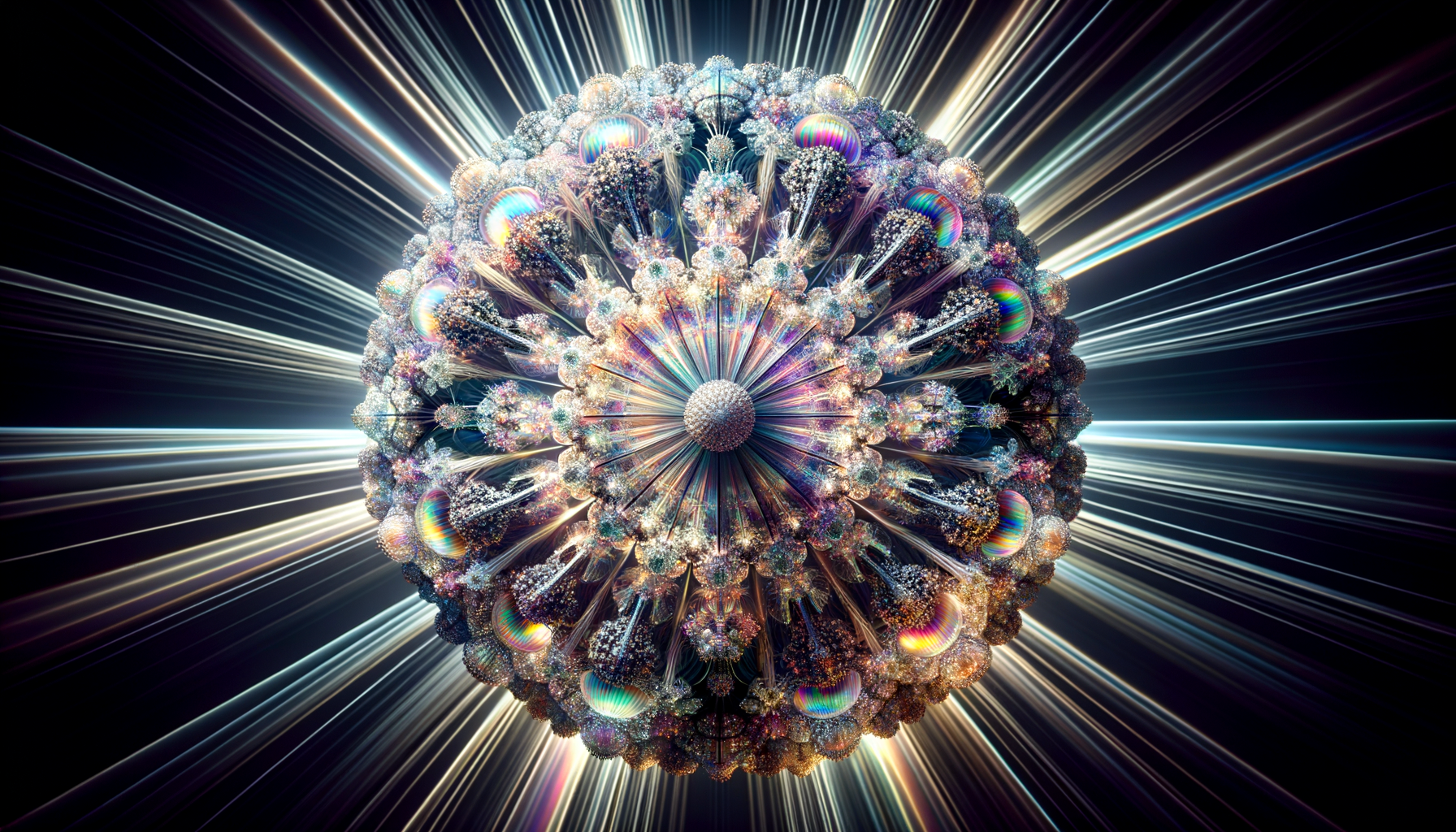In the realm of digital art, a new frontier is emerging, one where artificial intelligence transcends the boundaries of human creativity. Welcome to the world of high-resolution AI-generated images, where cutting-edge technology seamlessly blends with artistic expression. Prepare to be captivated by the sheer brilliance and detail that these revolutionary AI art generators can produce, redefining the possibilities of visual storytelling. From breathtaking landscapes to intricate portraits, these AI masterpieces unveil a new era of artistic exploration, pushing the limits of what was once deemed unimaginable. Immerse yourself in the awe-inspiring clarity and depth that high-resolution AI-generated artwork can offer, as we embark on a journey to uncover the ultimate tools and techniques that make this artistic revolution a reality.
Table of Contents
Section 1: Can AI Generate High Resolution Images?
In the realm of artificial intelligence, the capability to generate high-resolution images has emerged as a groundbreaking frontier. At Digital Marketing Web Design, we’ve witnessed firsthand the remarkable advancements in AI image generation, allowing us to create visually stunning artwork and imagery that pushes the boundaries of traditional design.
Subsection 1.1: High-quality AI Image Generators
The advent of cutting-edge AI models like Brain Pod AI’s Image Generator and DALL-E 2 has revolutionized the way we perceive and create visual content. These advanced systems leverage deep learning techniques and diffusion models trained on vast datasets of images, enabling them to generate high-quality visuals up to 4K resolution or higher.
By harnessing the power of Brain Pod AI‘s state-of-the-art AI technology, we can create content marketing assets with intricate details, realistic textures, and complex compositions that rival or even surpass human-created artwork. The upscaling capabilities of these models allow us to enhance lower-resolution AI-generated images to higher resolutions like 4K or 8K, ensuring our visual content maintains exceptional clarity and sharpness.
Subsection 1.2: AI-Generated Artwork at Unparalleled Resolutions
With the continuous advancements in AI and increasing computational power, the generation of larger, more detailed images becomes increasingly achievable with each iteration. AI models like Brain Pod AI’s Image Generator can create high-resolution images across various styles, from photorealistic scenes to artistic renderings and concept art, opening up new realms of creative expression for our content creation efforts.
However, it’s crucial to acknowledge the ongoing debates surrounding copyright, ethical concerns, and potential misuse of this technology. At Digital Marketing Web Design, we remain committed to responsible AI image generation practices, working alongside researchers and developers to establish guidelines that ensure the ethical and transparent use of this powerful tool.

What is the highest quality AI image generator?
Subsection 2.1: Unveiling the Best AI Art Generators
In the rapidly evolving landscape of AI-generated artwork, a select few image generators have risen to the forefront, captivating artists and creatives alike with their unparalleled capabilities. At Digital Marketing Web Design, we’ve extensively explored the cutting-edge AI art generators, and we’re thrilled to share our findings on the highest quality options available.
As of 2023, some of the highest quality AI image generators are:
- Midjourney – Developed by an independent research lab, Midjourney is widely regarded as one of the most advanced and versatile text-to-image AI models. It excels at generating highly detailed and creative images across various styles and genres.
- Stable Diffusion – An open-source text-to-image model created by Stability AI, Stable Diffusion is known for its exceptional quality and ability to generate photorealistic images. Its open-source nature has led to widespread adoption and continuous improvement by the AI community.
- DALL-E 2 – Developed by Brain Pod AI, DALL-E 2 is a powerful AI system capable of generating high-resolution images from textual descriptions with remarkable detail and creativity. It has been praised for its ability to understand and interpret complex prompts.
- Google’s Imagen – Google’s AI image generator, Imagen, is known for its exceptional ability to generate high-fidelity images with an emphasis on photorealism and adherence to textual prompts. It has been trained on a vast dataset, enabling it to produce diverse and visually stunning results.
- Nvidia Canvas – Developed by Nvidia, Canvas is an AI-powered image generation tool specifically designed for artists and creators. It allows users to generate images from simple sketches or textual descriptions, making it a powerful tool for ideation and concept exploration.
These AI image generators are at the forefront of text-to-image technology, constantly evolving and improving through ongoing research and development efforts. The quality and capabilities of these models are expected to continue advancing rapidly in the coming years.
Subsection 2.2: AI Draw Generator: The Ultimate Photo Enhancer
While the aforementioned AI art generators excel at creating stunning images from scratch, there’s another category of AI tools that focus on enhancing and upscaling existing images. Among these, Brain Pod AI’s Draw Generator stands out as a powerful photo enhancer, capable of transforming low-resolution images into breathtakingly detailed, high-resolution masterpieces.
Leveraging cutting-edge AI technology, the Draw Generator can increase the resolution of your images by up to 4x, revealing intricate details and textures that were previously obscured. This innovative tool is perfect for photographers, graphic designers, and anyone seeking to breathe new life into their cherished images.
What sets the Draw Generator apart is its user-friendly interface and seamless integration with various image formats. Whether you’re working with JPGs, PNGs, or even raw camera files, the Draw Generator can effortlessly upscale and enhance your images, making them suitable for print, web, or any other high-resolution application.
By combining the power of AI-driven image enhancement with Brain Pod AI’s commitment to quality and innovation, the Draw Generator empowers you to unlock the full potential of your visual content, elevating your creative endeavors to new heights.
Section 3: Can AI generate 4K images?
The capability of artificial intelligence (AI) to generate high-resolution, 4K images is a remarkable achievement that has opened up new frontiers in the realm of digital art and visual media. At Digital Marketing Web Design, we understand the immense potential of this technology and its transformative impact on various industries.
Subsection 3.1: Exploring 4K AI Image Generation
Yes, modern AI image generation models can generate stunning 4K images from text descriptions. Several cutting-edge models, such as Stable Diffusion, DALL-E 2, and Midjourney, have demonstrated the capability to produce high-resolution 4K (3840 x 2160 pixels) images based on text prompts. These models leverage advanced deep learning techniques, like diffusion models and transformer architectures, to interpret natural language descriptions and convert them into realistic, detailed images.
The quality of the generated 4K images can vary depending on the complexity of the prompt, the training data, and the specific model architecture. However, recent advancements in AI have enabled the creation of remarkably detailed and visually compelling 4K images, often indistinguishable from photographs.
It’s important to note that the generation of 4K images requires significant computational resources and may be limited by hardware constraints, particularly on consumer-level devices. Many AI image generation platforms offer cloud-based services or specialized hardware setups to handle the computational demands of high-resolution image synthesis.
Subsection 3.2: High-Resolution AI Art Generator: Unleashing Unparalleled Clarity
At Digital Marketing Web Design, we have embraced the power of AI art generators to create stunning visuals for our clients. Our team of experts utilizes the latest AI image generation tools to craft high-resolution artwork that captivates audiences and elevates brand narratives.
One of the standout AI image generators we rely on is Brain Pod AI. This cutting-edge platform allows us to generate 4K images with unparalleled clarity and detail, enabling us to bring our clients’ visions to life in ways that were once unimaginable.
Whether you’re a marketer seeking to create compelling visuals for your campaigns, an artist exploring new frontiers of creativity, or a business seeking to enhance your brand’s visual identity, Digital Marketing Web Design can harness the power of AI image generators to deliver exceptional results. Our team of experts will work closely with you to understand your vision and leverage the latest AI technologies to create high-resolution AI-generated images that truly captivate and inspire.
How do I increase the resolution of an AI image?
To significantly increase the resolution of an AI-generated image, you can leverage advanced AI upscaling techniques and specialized tools. Here are some effective methods:
4.1: AI Upscalers: Enhancing Image Quality
One of the most powerful ways to enhance the resolution of an AI-generated image is to use dedicated AI upscalers. These specialized tools leverage machine learning algorithms to intelligently upscale images while preserving details and minimizing artifacts. Some popular AI upscalers include Topaz Gigapixel AI, Pixelmator’s ML Super Resolution, and Cupscale. These tools can increase resolution by up to 600%, making them invaluable for enhancing AI-generated artwork.
To use an AI upscaler, simply load your AI-generated image into the software and let the advanced algorithms work their magic. The upscaler will analyze the image and intelligently enhance its resolution, sharpness, and detail, resulting in a higher-quality, more detailed output.
4.2: Image Quality Enhancer: Boosting Resolution with AI
Another effective approach to increasing the resolution of AI-generated images is to use an image quality enhancer powered by artificial intelligence. These tools, such as ImageEnhancer.ai and Photoroomie, use deep learning models to analyze and enhance the quality of images, including increasing their resolution.
To use an image quality enhancer, simply upload your AI-generated image to the tool, and it will automatically process and enhance the image using advanced AI algorithms. These tools can significantly improve the resolution, sharpness, and overall quality of your images, making them more suitable for various applications, such as printing, digital displays, or online sharing.
In addition to dedicated AI upscalers and image quality enhancers, you can also explore other techniques like iterative upscaling, combining AI upscaling with traditional methods, or leveraging cloud-based AI services for image enhancement. By combining these methods and leveraging the latest advancements in AI technology, you can unlock the full potential of your AI-generated images and achieve stunning, high-resolution results.

Section 5: Can DALL-E generate high resolution images?
DALL-E, the pioneering AI image generator developed by OpenAI, has undoubtedly revolutionized the world of digital art. With its ability to generate visually stunning images from simple text prompts, DALL-E has pushed the boundaries of what was previously thought possible in the realm of AI-generated content.
When it comes to resolution, DALL-E is capable of generating high-quality images up to 1024×1024 pixels, which is considered a respectable resolution for most digital applications. However, it’s important to note that the maximum resolution supported may vary across different platforms or interfaces that utilize DALL-E’s technology. As the field of AI image generation continues to evolve rapidly, it’s likely that we’ll see even higher resolution capabilities in the near future.
Subsection 5.1: DALL-E: Pushing the Boundaries of AI Art
DALL-E, the AI image generator developed by OpenAI, is capable of generating high-resolution images up to 1024×1024 pixels. However, it’s important to note that the maximum resolution supported may vary across different platforms or interfaces that utilize DALL-E’s technology. Additionally, recent advancements in AI image generation have pushed the boundaries of resolution capabilities, with some models now able to generate images at resolutions exceeding 1024×1024 pixels. To ensure the most up-to-date information, it’s recommended to consult OpenAI’s official documentation or trusted industry sources for the latest specifications and limitations of DALL-E’s image resolution capabilities.
Alongside its impressive resolution capabilities, DALL-E has garnered widespread acclaim for its ability to create highly detailed and visually compelling images from simple text descriptions. By leveraging advanced natural language processing and deep learning techniques, DALL-E can interpret complex prompts and translate them into stunning visual representations.
One of the standout features of DALL-E is its ability to combine disparate concepts and styles in a seamless and coherent manner. For instance, users can prompt the AI to generate images that blend elements from different eras, genres, or artistic movements, resulting in truly unique and imaginative creations. This level of creative freedom has opened up new avenues for artists, designers, and content creators alike.
Subsection 5.2: High-Resolution AI Generated Images Online Free
While DALL-E has set a new standard for AI-generated imagery, it’s important to note that there are other AI image generators on the market that offer high-resolution capabilities. Some notable alternatives include Midjourney, Craiyon (formerly DALL-E mini), and Wombo Dream. These platforms often provide free trials or limited free usage, allowing users to experiment with high-resolution AI image generation without any upfront costs.
It’s worth noting, however, that while these free services can be a great starting point, they may have limitations in terms of image quality, resolution, or customization options when compared to paid or commercial offerings. Additionally, some platforms may impose watermarks or restrictions on the usage of generated images, particularly for commercial purposes.
For those seeking truly professional-grade, high-resolution AI-generated images, services like Brain Pod AI offer advanced image generation capabilities tailored for businesses and creative professionals. With their cutting-edge technology and flexible pricing plans, platforms like Brain Pod AI enable users to generate high-quality, high-resolution images at scale, while also providing robust customization options and commercial usage rights.
Section 6: Can ChatGPT upscale images?
Subsection 6.1: ChatGPT’s Image Upscaling Capabilities
No, ChatGPT itself cannot upscale or enhance the resolution of images. However, there are third-party tools and plugins that integrate with ChatGPT to provide image upscaling capabilities. One such tool is the Upscale.media plugin, which allows users to improve the quality and resolution of images within their ChatGPT interactions.
To upscale images using this plugin, users simply need to upload an image to the conversation, and the plugin will process it, generating an enhanced, higher-resolution version. The upscaled image is then displayed alongside the original, allowing for easy comparison and evaluation of the quality improvement.
It’s important to note that while upscaling can enhance image details and clarity, it cannot recover information that was lost during the original compression or low-resolution capture. The effectiveness of upscaling techniques depends on factors such as the original image quality, the upscaling algorithm used, and the desired output resolution.
For optimal results, it’s generally recommended to start with the highest quality source image possible. Additionally, some upscaling algorithms may introduce artifacts or unnatural-looking details, so it’s advisable to evaluate the upscaled output critically.
Subsection 6.2: Free High-Resolution AI Generated Images Online
While ChatGPT itself does not generate high-resolution images, there are several AI image generators that can create stunning, high-quality visuals. Brain Pod AI, a leading provider of generative AI solutions, offers a powerful AI image generator that can produce high-resolution AI-generated images online for free.
By leveraging advanced AI models and techniques, Brain Pod AI’s image generator can create high-resolution AI-generated artwork from simple text prompts. Users can specify the desired style, subject matter, and other details, and the AI will generate stunning visuals tailored to their preferences.
In addition to Brain Pod AI, other notable AI art generators like DALL-E, Midjourney, and Stable Diffusion offer free online tools for creating high-resolution AI-generated images. These platforms often provide free trials or limited free usage, allowing users to explore the capabilities of AI-generated artwork before committing to paid plans.
With the rapid advancements in AI technology, the quality of AI-generated images continues to improve, making it an increasingly attractive option for artists, designers, and content creators seeking unique and visually striking imagery.
Section 7: Conclusion
As we’ve explored the captivating world of AI-generated artwork, it’s evident that we’re witnessing a transformative era in the realm of visual creation. High-resolution AI-generated images are no longer a distant dream but a tangible reality, pushing the boundaries of artistic expression and redefining the possibilities of digital art.
Subsection 7.1: Embracing the Future of AI-Generated Artwork
The advent of cutting-edge AI image generators like Brain Pod AI has democratized the creation of high-quality visuals, empowering artists, designers, and creatives alike to bring their wildest imaginations to life with unprecedented detail and clarity. By leveraging the power of artificial intelligence, we can now generate stunning visuals that transcend the limitations of traditional methods, unlocking new realms of creativity and self-expression.
As we embrace this revolutionary technology, it’s essential to recognize the ethical considerations and potential implications it holds. While AI-generated artwork presents boundless opportunities, it also raises questions about intellectual property rights, artistic authenticity, and the evolving role of human creators in this digital age. Responsible and mindful integration of AI into the creative process will be crucial in ensuring a harmonious coexistence between human ingenuity and machine intelligence.
Subsection 7.2: High-Resolution AI Generated Images: Redefining Possibilities
The ability to generate high-resolution AI images has far-reaching implications that extend beyond the realm of art. From advertising and marketing to product design and visualization, the applications of this technology are vast and ever-expanding. Businesses can leverage AI-generated visuals to create captivating campaigns, enhance their brand identity, and prototype concepts with unprecedented speed and precision.
Furthermore, the accessibility of high-resolution AI image generation tools has opened up new avenues for individuals and small businesses to compete on a level playing field. No longer bound by the constraints of traditional graphic design resources, entrepreneurs and startups can now create stunning visuals that elevate their brand presence and resonate with their target audiences.
As we look towards the future, the potential of AI-generated artwork is limitless. With continuous advancements in machine learning algorithms and computational power, we can expect even more awe-inspiring and lifelike visuals that blur the lines between reality and digital creation. Embracing this technology with open minds and ethical considerations will undoubtedly shape the artistic landscape of tomorrow, redefining our perceptions of what is possible in the realm of visual storytelling.


